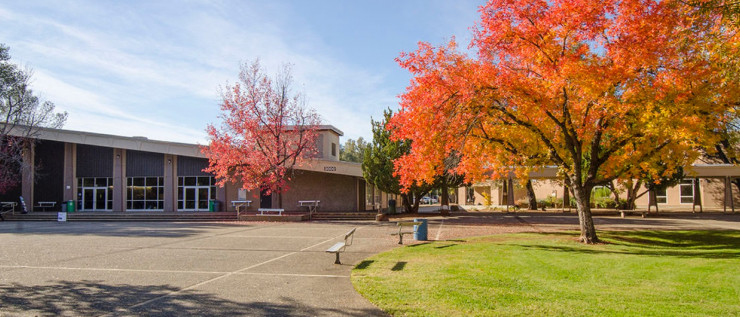Agriculture – Forest Science and Technology AS Degree
Associate in Science | SC Program: AS.1494
The job market in forestry is strong with respect to both permanent and seasonal employment. On average, 70-80% of seasonal Natural Resources job openings in northern California are for forestry technicians. Duties will vary, but generally include timber inventory and marking, harvest plan layout, ecosystem restoration work, and wildlife surveys. Today, this new forestry must focus on the ecosystem as a whole while realizing we still need to provide a myriad of values from our forests. Such values include biodiversity, clean air and water, and recreation in addition to wood products. By properly applying ecological principles to manage our forests, we can enhance biodiversity and lessen the impact of our consumption on forests around the world.
On average, seasonal forestry technicians are paid anywhere from $10-$15 per hour. Permanent jobs for qualified technicians start around $30,000 - $45,000 per year with benefits. Students who complete the A.S. degree in Forest Science and Technology, with the addition of CSU General Education courses, will be well prepared to transfer to a four-year degree at Humboldt State, Cal-Poly San Luis Obispo, or other out-of-state institutions such as the University of Idaho.
Students planning to transfer to a college or university should consult a counselor to select appropriate general education and elective courses that will meet the requirements of the chosen university program.
This degree is approved through the California Community College Chancellor’s Office. Upon satisfactory completion of all degree requirements and filing an application for graduation with Admissions and Records, the student’s transcript will reflect completion of this degree.



Choose your path
Map your education by viewing the program map for the degree or certificate you’re interested in earning below. Meet with a counselor to create your official comprehensive education plan.
A program map shows all the required and recommended courses you need to graduate and a suggested order in which you should take them. The suggested sequence of courses is based on enrollment and includes all major and general education courses required for the degree.
Fall Semester, First Year
14 Units TotalThis course is an introduction to the sampling methods and equipment used to inventory forest resources. Log scaling and aerial photo interpretation will also be discussed. Measurements of timber stand growth, quantity and quality, and other forest products including water, range, wildlife and outdoor recreation will also be covered. This course may be offered in a distance learning format.
Spring Semester, First Year
15 Units TotalAn introductory course in statistics designed to show the role of modern statistical methods in the process of decision making. Concepts are introduced by example rather than by rigorous mathematical theory. The following topics will be covered: measures of central tendency and dispersion, regression and correlation, probability, sampling distributions including the normal, t, and chi-square, statistical inference using confidence intervals and hypotheses testing. This course may be offered in a distance education format.
This course covers the theory and practice of geographic information systems (GIS). Students learn essential GIS procedures for data viewing, acquisition, manipulation, geographic referencing, and map creation. GIS data types, properties, database operations and applications are covered. Basic methods of GIS analysis are also included. This course may be offered in a distance education format.
Summer Semester, Second Year
1 Units TotalThe Vocational Worksite Learning course allows the student to gain on-the-job experience through employment/volunteerism at an approved job site that is acquired by the student and related to the student's major. A faculty member supervises all WSL courses to ensure that the work experience is of educational value. The course stresses good work habits and meeting of competencies through actual on the job performance. This course may be repeated three times for a maximum of 16 units or four total enrollments since course content varies and skills are enhanced by supervised repetition and practice.
Fall Semester, Second Year
15 Units TotalThis course is an introduction to the process of human communication with emphasis on public speaking. Subjects covered are audience analysis, choosing speech topics, finding and using supporting materials, arranging and outlining related points, essentials of speech delivery and evaluation. College level writing skills will be expected on all papers, outlines and short essays.
This course is a survey of inorganic chemistry and some organic chemistry suitable for agriculture and nursing students. The basic fundamentals of the metric system, chemical nomenclature, atomic and molecular structure, chemical reactions, energy changes, states of matter, solutions, chemical equilibria and kinetics, and organic functional groups are presented. The quantitative nature of chemistry is developed by introduction of the Avogadro's number and the mole and continuing with stoichiometry, gas law, solution concentrations and pH calculations. The lecture/discussion portion of this course may be offered in a distance education format.
Spring Semester, Second Year
15 Units TotalThis course takes an interdisciplinary approach to the study of race and ethnicity in the United States. It examines social justice movements in relation to ethnic and racial groups in the United States to provide a basis for a better understanding of the socioeconomic, cultural, and political conditions among key social groups including, but not limited to, Native Americans, African Americans, Asian Americans, and Latina/o Americans. This course examines the systemic nature of racial/ethnic oppression through an examination of key concepts including racialization and ethnocentrism, with a specific focus on the persistence of white supremacy. Using an anti-racist framework, the course will examine historical and contemporary social movements dedicated to the decolonization of social institutions, resistance, and social justice. This course may be offered in a distance education format.
Note: This class includes two Saturday field trips on classification, judging, and conservation of soils. The class is required for all agriculture, natural resources, and horticulture majors.
This class is an introductory course on the physical, chemical, and biological properties of soil as it relates to agriculture and natural resources. Ecosystem relationship of soil use and management is emphasized. The effects of drainage, tillage, and irrigation on land use are discussed. A portion of this course may be offered in a distance education format.
Please see a counselor to discuss options for meeting general education requirements for transfer to California State Universities (CSU) and/or University of California (UC) campuses, as well as any specific additional courses that may be required by your chosen institution of transfer.
*Alternative Courses: Please see a Shasta College counselor for alternative course options. You can also view the following to find other courses to meet degree/certificate requirements:
- California State Universities – General Education
- IGETC – Intersegmental General Education Transfer Curriculum
Contact Us for More Information
Counseling & Student Services
Contact InfoAcademic/Instructional Division Office
Start Your Future at Shasta College
We are dedicated to helping you reach your educational and career goals. To begin your journey, apply for admissions today!

